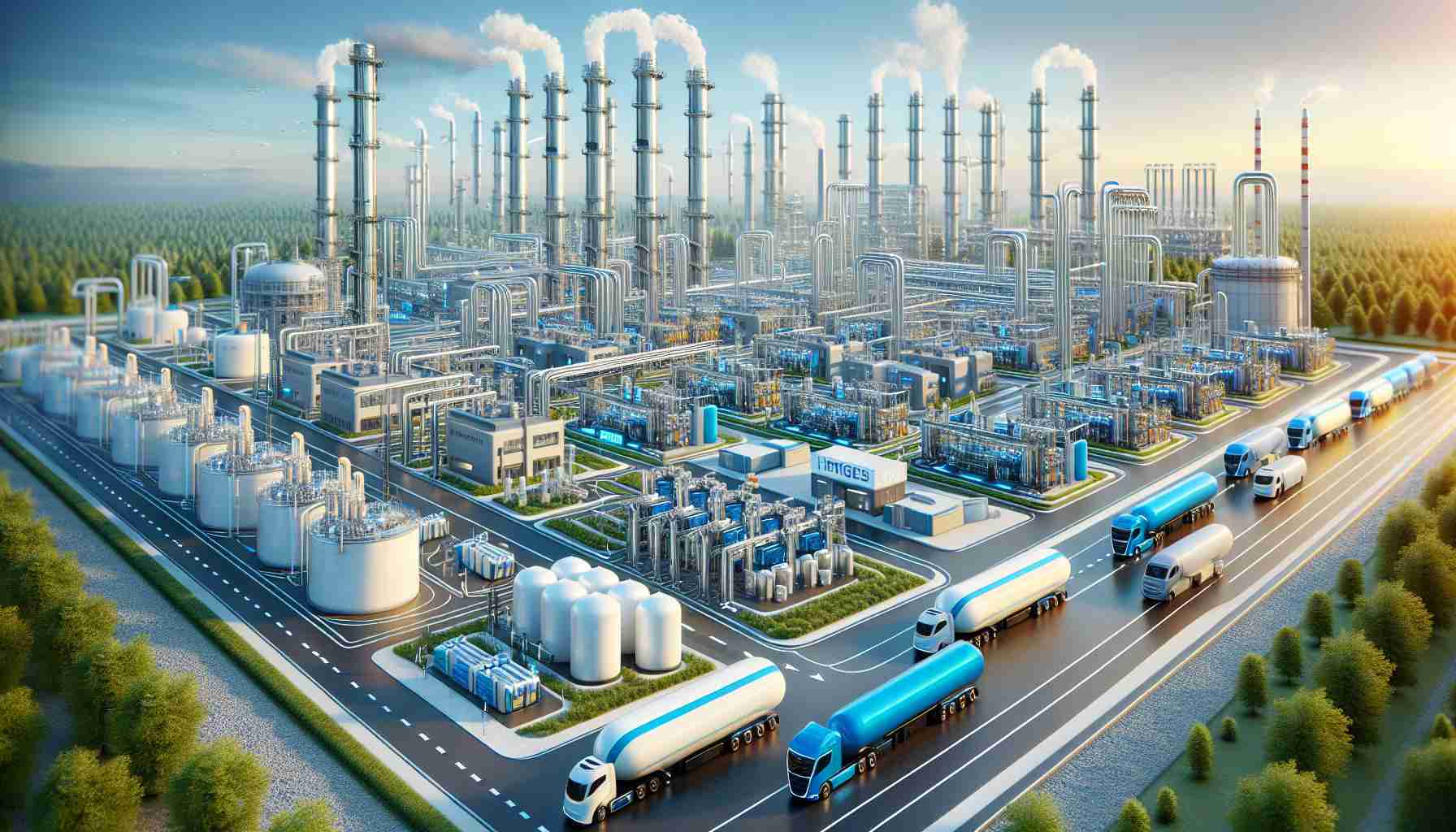Innovative Breakthrough in Hydrogen Logistics
HD Korea Shipbuilding & Offshore Engineering (HD KSOE) has achieved a significant milestone by acquiring Approval in Principle (AIP) from the American Bureau of Shipping (ABS) for a cutting-edge tank design. This advancement is poised to transform large-scale hydrogen transport and storage capabilities.
The new tank utilizes a sophisticated vacuum insulation system that streamlines the vacuum creation process in large tanks, an essential feature for the safe and efficient transportation of hydrogen. Retaining a vacuum state at an impressively low temperature of –253℃, this design ensures that vast amounts of liquid hydrogen can be transported safely without losses.
ABS undertook a thorough review of the design to confirm that it meets all relevant class and regulatory standards. The validation process notably involved collaboration with prominent players in the energy and shipping sectors, including Woodside Energy, Mitsui O.S.K. Lines (MOL), and Hyundai Glovis, which jointly developed an impressive 80,000-cubic-meter liquid hydrogen carrier.
Highlighting the company’s dedication, the vice president of HD KSOE, Dr. Byeongyong Yoo, discussed their ongoing efforts to enhance technological solutions for transporting various energy sources, including LNG, LPG, ammonia, CO2, and hydrogen. This innovative vacuum system and its forthcoming large-scale validation tests signify a promising future for efficient energy shipping.
Understanding the Broader Implications of Hydrogen Logistics Innovation
The advancement in hydrogen logistics, particularly through HD Korea Shipbuilding & Offshore Engineering’s (HD KSOE) new tank design, presents far-reaching implications that extend beyond technological innovation. As major global economies pivot towards greener energy solutions, the transportation of hydrogen emerges as a cornerstone for achieving carbon neutrality. With nations recognizing hydrogen’s potential as a clean fuel alternative, effective logistics will become crucial in integrating this resource into the wider energy supply chain.
This breakthrough is not merely about enhancing efficiency for shipping companies. It signifies a cultural shift toward sustainable energy, influencing how industries think about fuel sources. As hydrogen becomes more accessible, sectors like transportation, power generation, and even manufacturing are likely to adapt, leading to a redefinition of energy consumption patterns across societies.
Moreover, the environmental ramifications could be monumental. Hydrogen boasts the potential to significantly lower greenhouse gas emissions, particularly when derived from renewable sources. Should the logistics frameworks adapt effectively, the transition may lead to a dramatic decrease in fossil fuel reliance, fostering a cleaner environment.
In terms of future trends, as hydrogen infrastructure develops, a robust market for hydrogen-driven technologies may emerge. Companies investing in these innovations could see substantial economic growth, resulting in a transitional shift in the global economy. The transition also poses challenges, including the need for comprehensive regulations and the development of safety protocols, which will shape the long-term trajectory of energy logistics and sustainability worldwide.
Revolutionizing Hydrogen Transport: The Future of Energy Logistics Unveiled
Hydrogen is emerging as a vital player in the global energy landscape, and recent advancements in hydrogen logistics may reshape the industry. HD Korea Shipbuilding & Offshore Engineering (HD KSOE) has received Approval in Principle (AIP) from the American Bureau of Shipping (ABS) for an innovative tank design that significantly enhances the transportation and storage of liquid hydrogen.
Innovative Tank Design Features
The new hydrogen tank employs a sophisticated vacuum insulation system that facilitates a streamlined vacuum creation process. Operating at an ultra-low temperature of –253℃, this design prevents the loss of liquid hydrogen during transport, an essential factor for enhancing the efficiency and economic viability of hydrogen supply chains. The emphasis on safety and efficiency marks a crucial development in hydrogen logistics.
Industry Collaboration and Development
The successful validation of this new design was achieved through collaboration with major industry players such as Woodside Energy, Mitsui O.S.K. Lines (MOL), and Hyundai Glovis, who collectively developed an impressive 80,000-cubic-meter capacity liquid hydrogen carrier. This collaborative effort reflects the industry’s commitment to advancing hydrogen as a clean energy source.
Pros and Cons of the New Hydrogen Tank System
Pros:
– Increased Safety: The vacuum insulation minimizes the risk of hydrogen loss, promoting safer transport.
– Enhanced Capacity: The 80,000-cubic-meter tank significantly increases the volume of hydrogen that can be transported at once.
– Collaboration-Driven Development: Involvement from multiple industry leaders ensures robust engineering solutions and shared expertise.
Cons:
– High Initial Costs: Advanced tank designs and technology may require substantial initial investment.
– Regulatory Compliance: Navigating regulatory requirements across different countries can be complex.
– Infrastructure Requirements: Existing infrastructure may need upgrades to accommodate new tank sizes and technologies.
Market Insights and Future Implications
With the push towards hydrogen as a sustainable energy source, HD KSOE’s advancements reflect a significant trend in the energy sector. The rise in hydrogen demand is expected to drive a need for more efficient logistics solutions that can transport this resource safely and economically.
Potential Use Cases
– Shipping Hydrogen to Industrial Consumers: With increased capacity, large-scale hydrogen carriers can service major industrial clients, reducing reliance on fossil fuels.
– Renewable Energy Integration: Hydrogen produced from renewable sources can be stored and transported efficiently, supporting the transition to cleaner energy systems.
Challenges and Limitations
Despite its potential, the widespread adoption of new hydrogen logistics solutions faces challenges, including:
– Technological Barriers: Continued innovation is needed to ensure the reliability and safety of hydrogen transport systems.
– Market Uncertainties: Fluctuating demand and regulatory changes could affect the profitability of hydrogen logistics investments.
Pricing Trends and Predictions
As the technology matures and scales up, the cost of transporting hydrogen is expected to decrease. Analysts predict that with increased demand and innovation in logistics systems, hydrogen could become a competitive alternative to traditional fossil fuels within the next decade.
For more information on hydrogen technology and advancements, visit HD Korea Shipbuilding & Offshore Engineering.
By embracing innovations in hydrogen transport, the energy industry is poised to unlock new potential for sustainable energy solutions.














